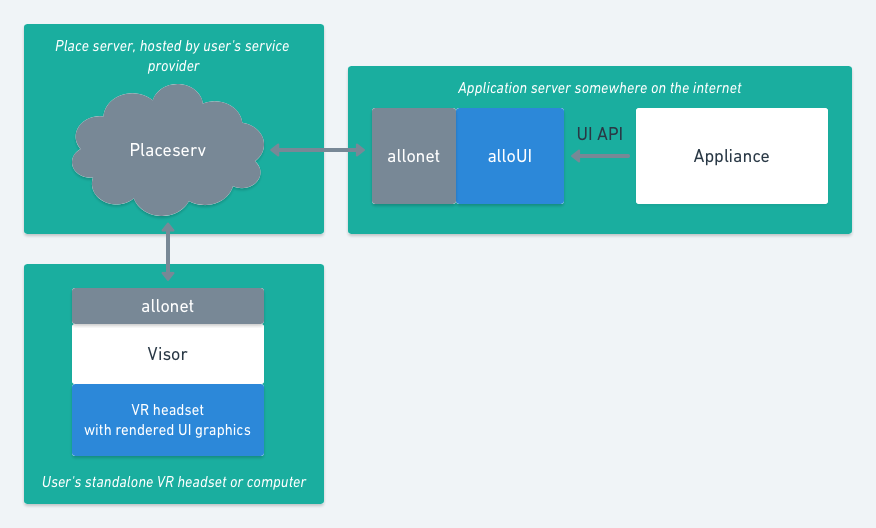Hosting an Alloverse app
So! You’ve built an Alloverse app, and now you want to host it on the Internet so that other people can use it. This is very similar to hosting a web app: you put some code on a server on the Internet, and then other people can access that server, and run the code on that server to access your web app in their browser.
The one thing that is a bit weird to get your head around is that an alloapp isn’t accessed directly by the end user’s browser! Instead, the APP talks to the PLACE, and then the PLACE updates its world representation and sends this new world to the USER’s visor.

When you’re running an alloapp on your local development machine, you have used ./allo/assist run alloplace://sandbox.places.alloverse.com or something similar to connect your app directly to a specific place. This is good for debugging, or for demoing something to someone once. However, it won’t let other users in other Places launch your app, and also your app will stop running in the Place e g when your laptop goes to sleep.
In production, you can run ./allo/assist serve on a dedicated server to start a http gateway. When an alloplace accesses this gateway, it will start a new instance of your alloapp, and connect it to the alloplace that asked for it. This is how you put your app properly on the internet, and let other people launch it to their Alloverse Places.
What’s actually going on, underneath?
- A user clicks an
alloapp:URL on their computer or headset - If Alloverse Visor is already running on that device, and is connected to a place:
- The Visor calls the interaction
launch_appon the connected Place, asking it to launch the app on behalf of the user. - The Place extracts the http(s) URL portion, and calls it with the URL to get back to the current place + identity of the requesting user (see url definition for full description).
- The gateway launches a new instance of the app, and connects it to the calling place.
Step-by-step best practice hosting
In the future, there will be a Dockerfile in the standard alloapp template. For now, you can do something like this:
- Put your code on a server somewhere. This server should have a nice DNS name and proper SSL certificates.
- Using systemd or similar, configure the server to automatically run
./allo/assist servein the root of your project on boot - Setup an nginx SSL termination proxy in front of it, with a
proxy_passtohttp://localhost:8000(which is where the gateway is running). (this is technically optional, but recommended) - If you did step 3, make sure to add a firewall disallowing traffic to port 8000.
You can now figure out the URL of your app. If your server is example.com, your gateway is now available over HTTPS at https://example.com; or if you didn’t configure nginx or ssl, at http://example.com:8000. Take this URL, and prepend alloapp:, so you get something like: alloapp:https://example.com/. That’s your app’s URL!
In the hopefully not too distant future, you’ll be able to log onto my.alloverse.com to register your app metadata and URL. This will then publish your app to the Marketplace inside Alloverse, so any user can access it.